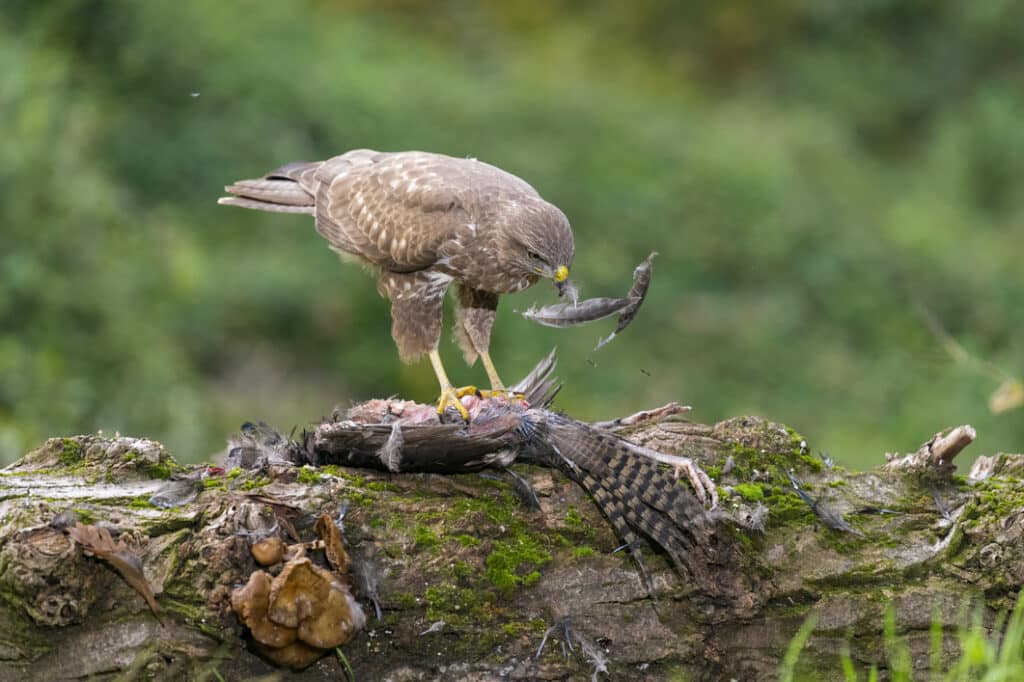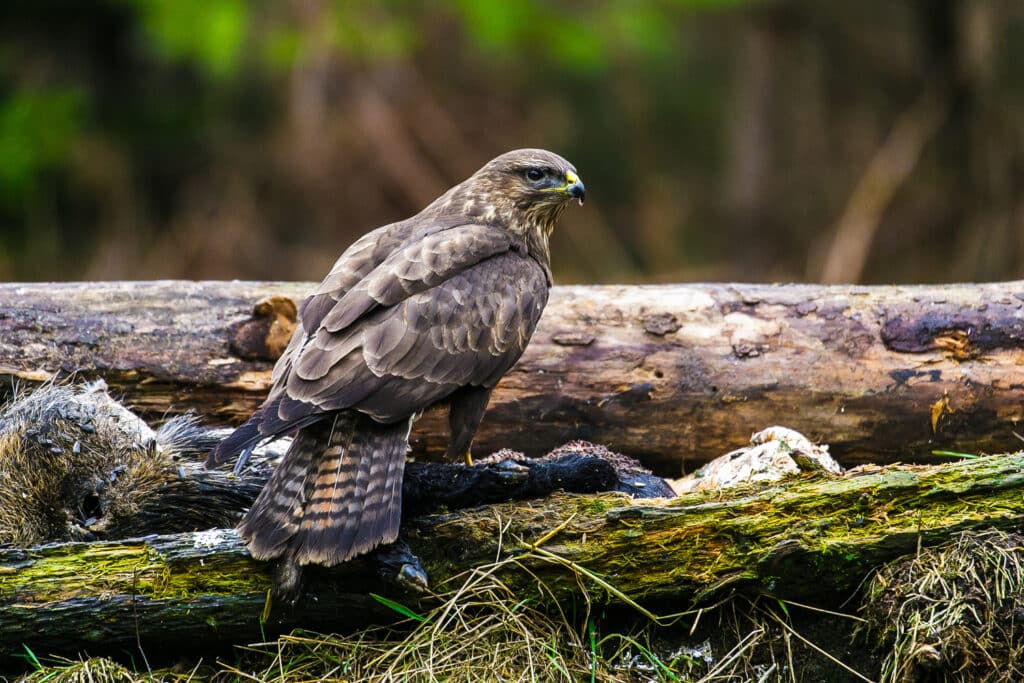Facts about the Common Buzzard
Scientific name: Buteo buteo
Bird Family: Kites, hawks and eagles
UK conservation status: Green
At a glance
- Until recently quite scarce, now the UK’s commonest bird of prey.
- When soaring they hold their wings in a shallow V, often giving a mewing call.
- Shooting estates are increasingly calling for licences to ‘manage’ Common Buzzard numbers.

Three species of buzzard occur in the UK: the Common Buzzard, Honey Buzzard (a breeding visitor with less than 50 pairs), and Rough-legged Buzzard (a winter visitor in very small numbers).
The Common Buzzard (or more often just ‘the buzzard’) is a medium sized bird of prey. When gliding and soaring it will often fan its barred tail and hold its wings in a distinctive shallow ‘V’. Variable in colour from all dark brown to much paler variations, buzzards have a mewing ‘peee-uuu’ call that most of us will be familiar with.
Until relatively recently that wouldn’t have been the case though.

Buzzards have been persecuted for centuries. In 1539 Henry VIII passed an Act of Parliament making it a crime to steal eggs and chicks but specifically excluded buzzards from the list of protected birds. James I of Scotland decreed buzzards were vermin, ordering their destruction.
By the middle of the 19th century buzzards were only found in the north and west of the UK, and by the end of the century in just a few areas in the western corner of England. By that time it had been persecuted out of Ireland entirely.
Thanks to changing public attitudes and better protection, the Buzzard has shown a substantial eastward range expansion since the 1990s and is now an almost ubiquitous breeding bird in the UK again. Remarkably it is now the most abundant UK raptor, with about 70,000 breeding pairs.
Not everyone welcomes this increase, though (which in reality is just the re-occupation of territory that the species was once forced out of). Parts of the shooting industry has been saying for more than a decade now that there are ‘too many’ buzzards and they need ‘managing to restore balance’.
Sadly it appears that the illegal persecution of the Common Buzzard is mirroring its general increase. Much of this persecution will go unseen and unnoticed, but there has still been a number of high-profile convictions of gamekeepers in just the last few years.
- In 2014 Norfolk gamekeeper Allen Lambert, described as Britain’s ‘worst bird of prey poisoner’, was convicted of killing ten buzzards (and a sparrowhawk).
- In Scotland gamekeeper Alan Wilson was convicted in 2019 of killing four buzzards (and a Peregrine, three badgers and an otter) between 2016 and 2017.
- In January 2021 Nottinghamshire gamekeeper John Orrey was filmed clubbing to death two buzzards caught in his cage traps.
- In early 2022 Wiltshire gamekeeper Archie Watson was convicted of dumping the corpse of a buzzard into a covered well on a pheasant-shooting estate, which was later found to be where the bodies of eleven buzzards and four Red Kites had been hidden.
- In October 2022, Norfolk gamekeeper Matthew Stroud admitted to the intentional killing of six buzzards and a single Northern Goshawk as well as a string of other offences.
- In January 2023 Dorset gamekeeper Paul Allen appeared in court after police found six Buzzards and ‘parts’ of three further Buzzards in a property search.
As the above suggests, most buzzard persecution is committed by gamekeepers on private estates. Poisoning evidence is very difficult to obtain however. And shooting is so commonplace now many people have stopped noticing it. How many of us could actually tell whether a ‘legal’ target was being shot at or a buzzard anyway?
Bearing that in mind, just imagine how many crimes against buzzards take place every year that are never even recorded.

